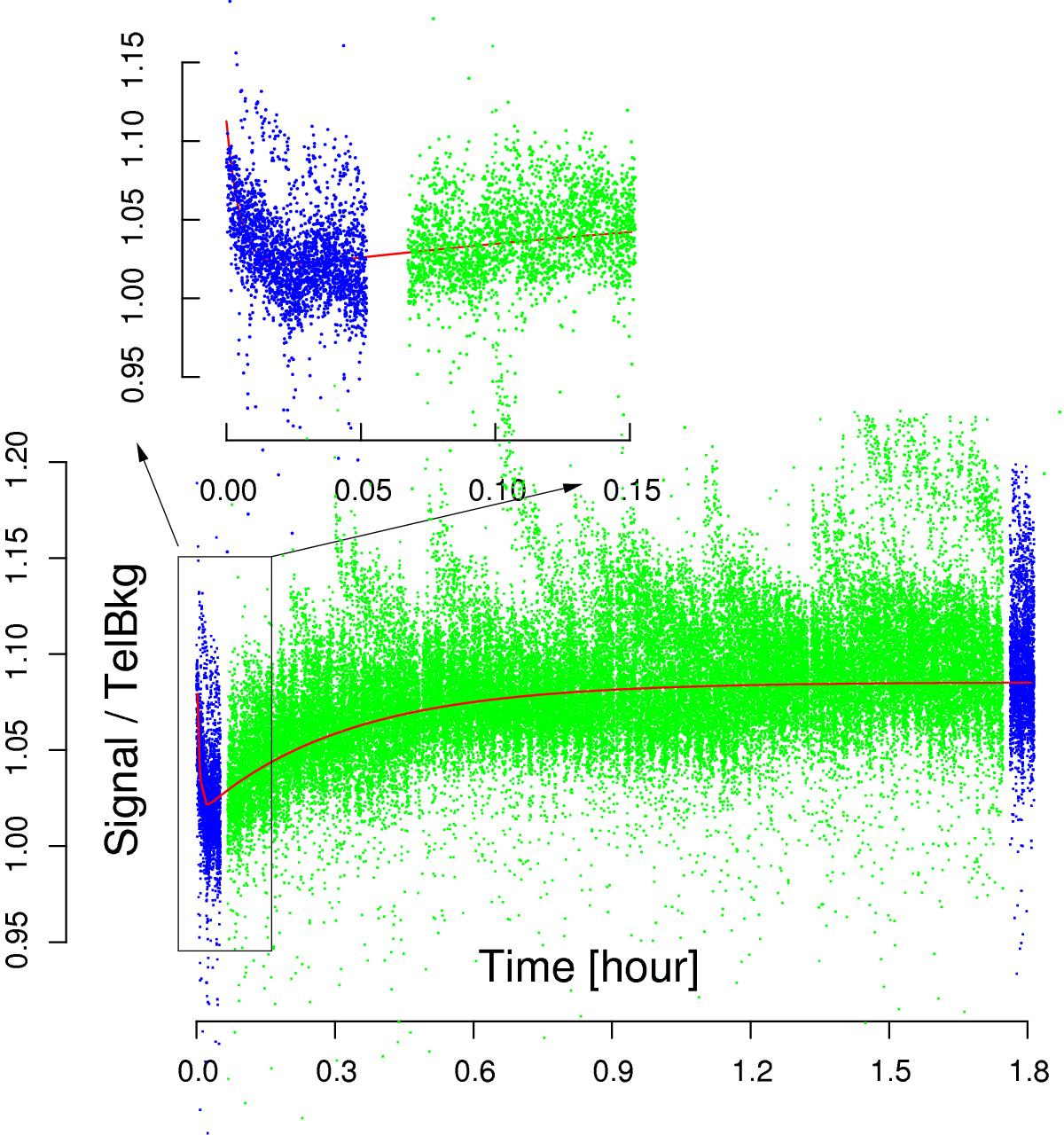Fig. 3

When the signals from a spaxel are normalized to the expected telescope background a long-term transient after the calibration block becomes clear. In this example (an observation of M81, ObsID 1342269535) an OFF position is observed at the beginning and at the end of the observation (blue dots), while a 2 × 2 raster observation is performed in the middle (green dots). Since the continuum emission of the object is negligible with respect to the telescope background, it is possible to fit the general long-term transient (red line) and correct the signal. Note that many huge transients appear in individual spectral pixels because of cosmic ray hits on the detectors. If this correction is not made, and an average background is subtracted from the signal, the final image will present an artificial gradient and the flux will be negative in some regions. Top inset panel: a close-up of the initial part of the signal just after the calibration block, showing the strong transient. The periodic variation in the signal is a left-over from the imperfect telescope background estimate used for normalization. The empty spaces between points occur during telescope slewing.
Current usage metrics show cumulative count of Article Views (full-text article views including HTML views, PDF and ePub downloads, according to the available data) and Abstracts Views on Vision4Press platform.
Data correspond to usage on the plateform after 2015. The current usage metrics is available 48-96 hours after online publication and is updated daily on week days.
Initial download of the metrics may take a while.


